| Monsanto MAN1 LED Display (MAN-1, MAN1A) | |
| Written by AnubisTTP on 2007-07-22 |
|
Devices included in this entry:
Monsanto MAN1 (14-pin clear epoxy DIP; pictured in thumbnail)
Litronix MAN1 (14-pin clear epoxy DIP)
Monsanto MAN1A (14-pin red epoxy DIP)
The Monsanto MAN-1 is generally considered to be the world's first production seven-segment LED display. Following the introduction of the MAN1, the now-familiar seven-segment LED rapidly took over the world, wiping out the demand for Nixie tubes, Panaplex displays, Minitrons, and nearly every other display technology in a single blow. Each segment of the MAN-1 is made up of a pair of silicon dies, which have been mounted to a printed circuit substrate and buried in clear epoxy. Each die is masked in such a way as to divide the light output into four separate dots, which is what gives the MAN1 its characteristic bitmapped appearance. The MAN1 also includes a decimal point, which is made from what appears to be a single MV1 die. The MAN-1's first-generation diode technology results in a very dim display, but the virtual immortality of LED technology showed a potential that Nixie's and incandescent displays could not hope to compete with.
Soon after the release of the MAN-1, Monsanto introduced a modified version, the MAN-1A. The MAN-1A is identical in functionality and basic construction to a standard MAN-1, but has a dark red epoxy case which does a great deal to hide the display's ugly internal construction.
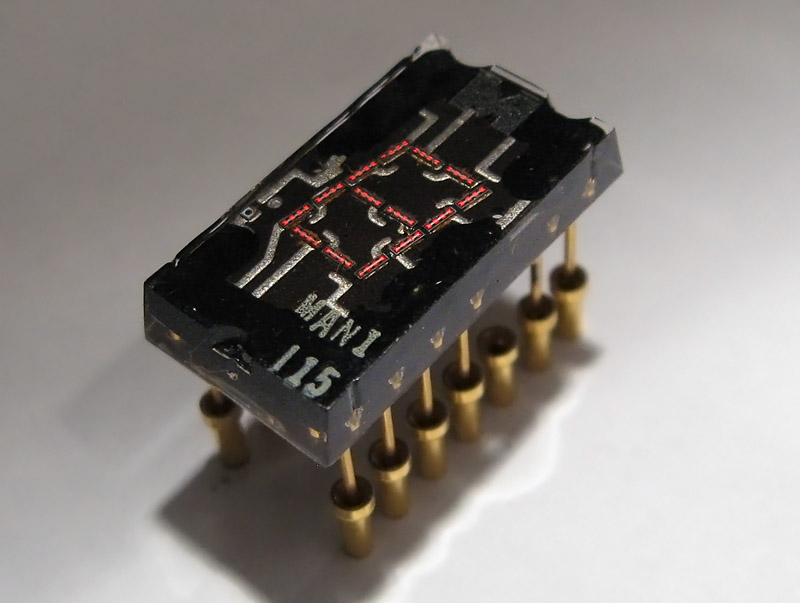
Monsanto MAN-1 display.
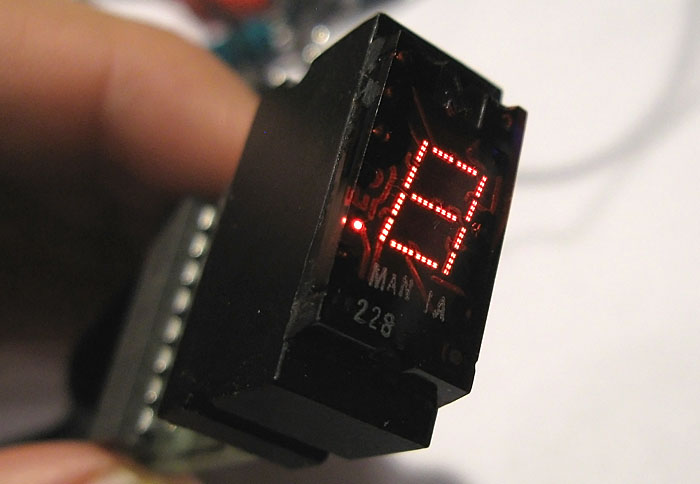
The Monsanto MAN1A appears nearly identical to a standard MAN1, but has a red epoxy package which hides much of the crude internal construction.
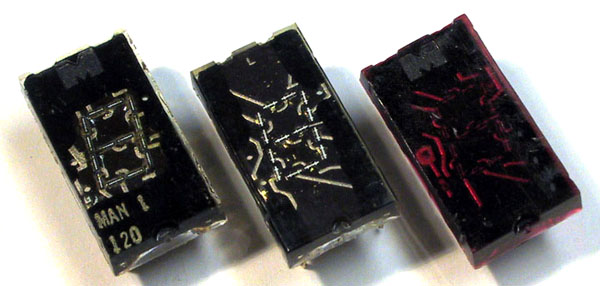
MAN-1 family photo: the center display is a rare Litronix-manufactured MAN-1.

Monsanto MAN-1 die structure, 20x magnification.
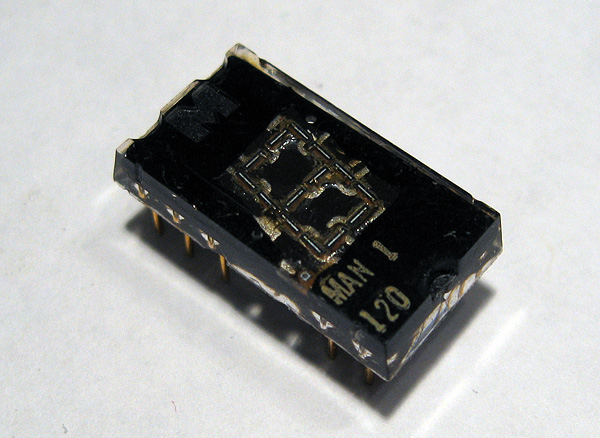
MAN1 top.

MAN-1 underside. This example has clipped leads.
 Return to Solid State & LED Displays
Return to Solid State & LED Displays


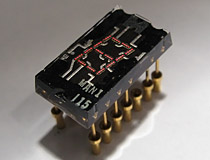








 Return to Solid State & LED Displays
Return to Solid State & LED Displays